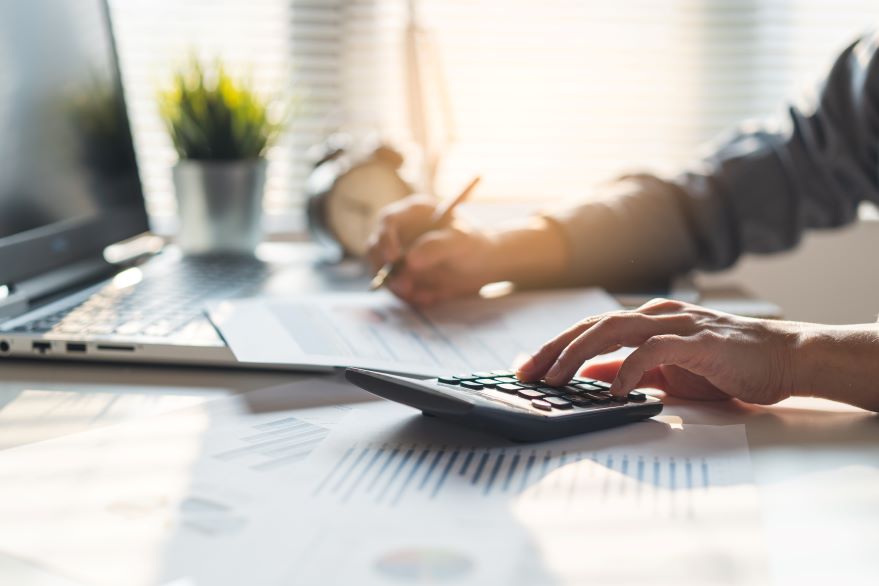You might’ve heard something about the government getting rid of paper tax returns and making everything digital. That’s what Making Tax Digital (MTD) is all about – moving tax online and cutting out paperwork.
It sounds good in theory – less faff with forms – but there’s been a lot of changes and delays, and it can be hard to keep track of what you actually need to do.
The story so far
Let’s break it down:
- Since April 2019: If your business is VAT registered and turning over more than £85k a year, you should’ve already been submitting VAT returns online using MTD-compatible software.
- From April 2022: Even if you don’t earn over the VAT threshold, all VAT-registered businesses must now use MTD.
So if you’re VAT registered, you should already be filing your VAT the MTD way.
The next big deadline
If you’re not VAT registered, or you’re a sole trader who earns under the VAT threshold, here’s what’s coming next:
- April 2026: If you earn over £50,000 from self-employment or rental income, you’ll need to switch to MTD.
- April 2027: That threshold drops to £30,000.
That means most self-employed earners will need to go digital by April 2027 at the latest.
So what does that mean for you?
Once MTD for Income Tax kicks in, the old-style Self-Assessment form goes out the window. Instead, you’ll need to:
- Keep your records digitally (no more boxes of receipts or paper notebooks).
- Submit quarterly updates to HMRC (four per year).
- Do a final declaration at the end of the tax year.
So instead of one tax return a year, you’ll be sending five digital updates to HMRC every year. Don’t panic – if you’re organised, it’s not as bad as it sounds.
| Quarter | Accounting period | Filing Deadline |
| Q1 | 6 April – 5 July | 7 August |
| Q2 | 6 July – 5 October | 7 November |
| Q3 | 6 October – 5 January | 7 Feb |
| Q4 | 6 Jan – 5 Apr | 7 May |
Finding compatible accounting software

If you’ve already made the switch to accounting software, there’s a solid chance it’s already compatible with MTD. But it’s highly important to check this.
1. Check when MTD will apply to you
Review your total annual self-employment income. If it’s over £50,000, you’ll be affected from April 2026; over £30,000 means April 2027.
2. Choose your software
- MTD-compatible accounting software, or
- Bridging software to connect existing spreadsheets to HMRC.
- Search the government’s MTD software search tool or check the details on the website of the accounting software you use.
There are hundreds of approved tools listed on Gov.uk, including some free options. Many cloud-based accounting platforms (like Xero, QuickBooks, or FreeAgent) already include MTD functionality.
3. Start keeping digital records
Whether you’re using a full accounting package or spreadsheets, all income and expenses will need to be recorded digitally and stored securely.
4. Link your software to HMRC
This involves entering your Government Gateway ID into your software, which connects it to HMRC’s systems so you can file returns directly.
There are nearly 200 bridging tools listed on Gov.uk, some free, most with a fee. Just remember: bridging software only handles submissions – you’ll still need to manage and maintain your digital records yourself.
You can add (and remove) any of the 40+ tax services to your account by going to the home page or “Manage account” and clicking on “Get online access to a tax, duty or scheme”. To add a service to your account, you’ll need to have registered for that tax, so do this first if you haven’t already.
What digital records do you need to keep?
Whichever software you choose, you’ll need to keep digital records of the following:
- Business or rental income
- Expenses and outgoings
- Dates and values of each transaction
- VAT details (if applicable)
- Any relevant adjustments
And depending on whether you’re using a specific scheme, you’ll also need a digital record of:
- your total daily gross takings (if you use a retail scheme)
- items you can reclaim VAT on (if you use the Flat Rate Scheme)
- your total sales, and the VAT on those sales (if you trade in gold and use the Gold Accounting Scheme)
What to do next?
MTD might seem like a pain, but it’ll be a lot easier if you start getting ready early. Like moving from hand tools to power tools – once you’re set up, it can actually save you time! Think of it like ‘tax as you go’ – you can keep on top of it in a way that suits you. Whether it’s a quick update during your lunch break or five minutes between jobs, doing it little and often makes life a lot easier come deadline time.
If you’re unsure what to do next, speak to your accountant, or check out the HMRC website. Better to get sorted now than scramble when the deadline hits!
And while you’re getting your books in order, don’t forget to check your business insurance too. At Howden, we work with tradespeople like you every day – from sole traders to growing businesses – and can help you find the right cover to keep your tools, van, and livelihood protected.
Get in touch with your nearest Howden team today to make sure you’re properly covered.
Sources: Gov.UK, Nerd Wallet, Ross Martin
You could also read:
- Car insurance prices drop 23% for young drivers!
- The most iconic on-screen number plates
- Good debt vs bad debt when buying a home
- Five hidden costs that could derail your holiday!
- 20mph zones – how effective are they?
This is a marketing blog by Howden Insurance.

